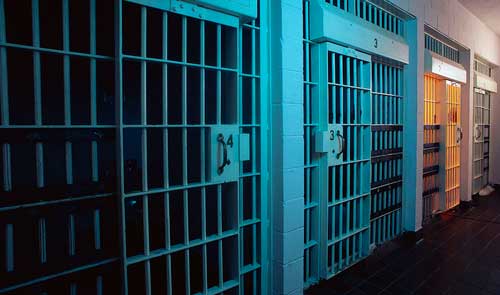Researchers apply infection-modeling to incarceration
The incarceration rate has nearly quadrupled since the U.S. declared a war on drugs, researchers say. Along with that, racial disparities abound. Incarceration rates for black Americans are more than six times higher than those for white Americans, according to the U.S. Bureau of Justice Statistics.
To explain these growing racial disparities, researchers at Virginia Tech are using the same modeling techniques used for infectious disease outbreaks to take on the mass incarceration problem.
By treating incarceration as an infectious disease, the scientists demonstrated that small but significant differences in prison sentences can lead to large differences in incarceration rates. The research was published in June in the Journal of the Royal Society Interface.
Incarceration can be “transmitted” to others, the researchers say. For instance, incarceration can increase family members’ emotional and economic stress or expose family and friends to a network of criminals, and these factors can lead to criminal activity.
Alternatively, “official bias” leads police and the courts to pay more attention to the incarcerated person’s family and friends, thereby increasing the probability they will be caught, prosecuted and processed by the criminal justice system, researchers said.
“Regardless of the specific mechanisms involved,” said Kristian Lum, a former statistician at the Virginia Bioinformatics Institute now working for DataPad, “the incarceration of one family member increases the likelihood of other family members and friends being incarcerated.”
Building on this insight, incarceration is treated like a disease in the model and the incarcerated are infectious to their social contacts — their family members and friends most likely affected by their incarceration.
“Criminologists have long recognized that social networks play an important role in criminal behavior, the control of criminal behavior, and the re-entry of prisoners into society,” said James Hawdon, a professor of sociology in the College of Liberal Arts and Human Sciences. “We therefore thought we should test if networks also played a role in the incarceration epidemic. Our model suggests they do.”
Synthesizing publically available data from a variety of sources, the researchers generated a realistic, multi-generational synthetic population with contact networks, sentence lengths, and transmission probabilities.
The researchers’ model is comparable to real-world incarceration rates, reproducing many facets of incarceration in the United States.
Both the model and actual statistics show large discrepancies in incarceration rates between black and white Americans and, subsequently, the likelihood of becoming a repeat offender is high.
Comparisons such as these can be used to validate the assumption that incarceration is infectious.
“Research clearly shows that this epidemic has had devastating effects on individuals, families, and entire communities,” Lum said. “Since our model captures the emergent properties of the incarceration epidemic, we can use it to test policy options designed to reverse it.”
Harsher sentencing may actually result in higher levels of criminality. Examining the role of social influence is an important step in reducing the growing incarceration epidemic.
If our reporting has informed or inspired you, please consider making a donation. Every contribution, no matter the size, empowers us to continue delivering accurate, engaging, and trustworthy science and medical news. Independent journalism requires time, effort, and resources—your support ensures we can keep uncovering the stories that matter most to you.
Join us in making knowledge accessible and impactful. Thank you for standing with us!


Obviously a drug user is not the same kind of criminal as a thief or a rapist. So the way that drug users (who indeed still have broken the law) should be incarcerated shoulld be made different from the other kinds of criminals. This should help the “disease” of hardened crime from spreading.
Unfortunately to achieve ideal would take a great deal of education and new law-making, both of which have to overcome the twin hurdles of political injustice and deliberate stupid ignorance on the parts of the judiciary and police departments, respectively.